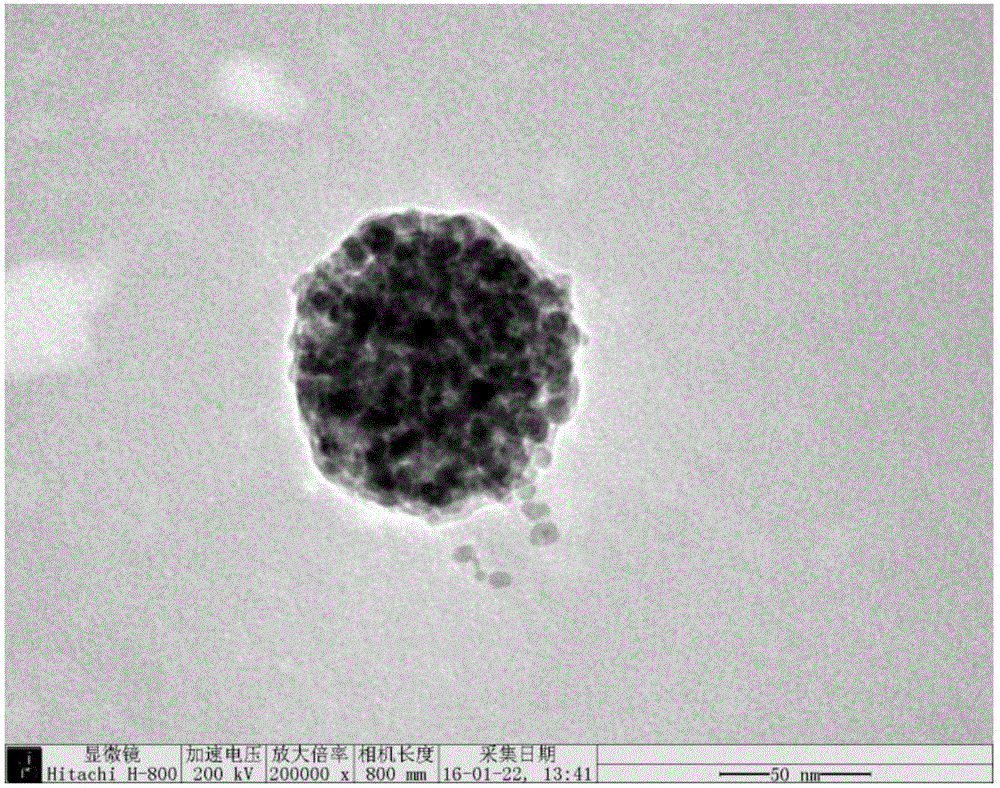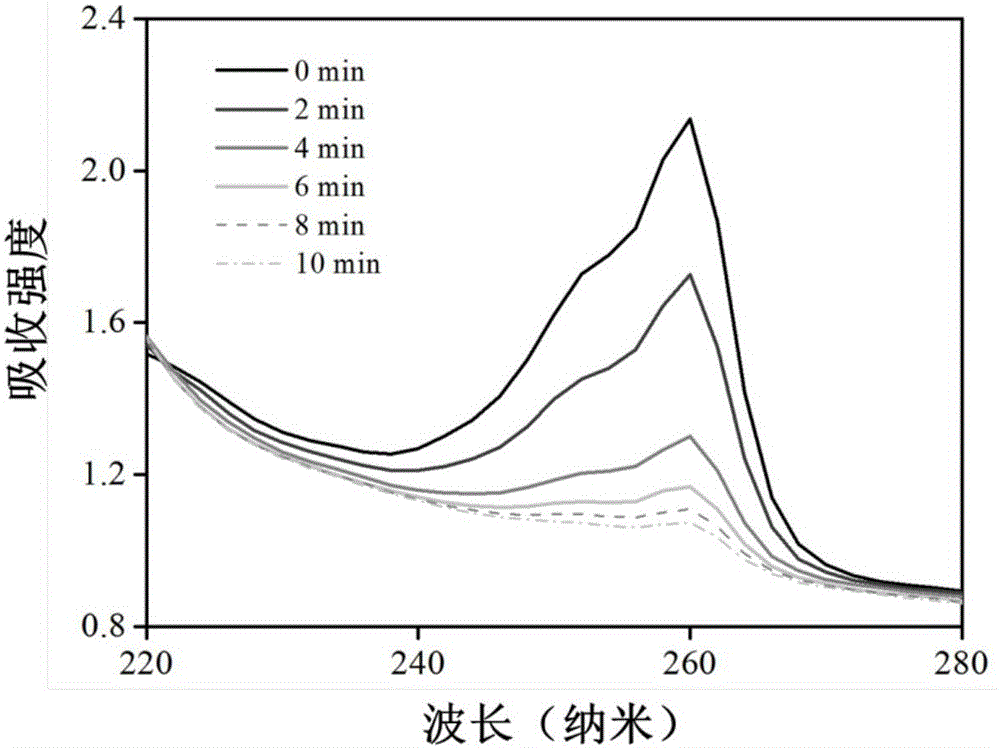Amphiphilic silane-coated water-soluble composite nano-material and application thereof
A technology of water-soluble composite and nanomaterials, applied in analytical materials, luminescent materials, material excitation analysis, etc., can solve the problems of difficult biological application, complicated operation steps, large size of water-soluble nanoparticles, etc.
- Summary
- Abstract
- Description
- Claims
- Application Information
AI Technical Summary
Problems solved by technology
Method used
Image
Examples
Embodiment 1
[0024] First, ferric oxide nanoparticles were synthesized according to the co-precipitation method, and the surface was coated with oleic acid in order to increase its stability (Wang, J., et al.Remote manipulation ofmicronomachines containing magnetic nanoparticles. Optics Letters 34,581- 583 (2009)).
[0025] The prepared oily iron ferric oxide nanoparticles and n-octyltrimethoxysilane (purchased from sigma company) were respectively configured into 5 mg / mL tetrahydrofuran solutions, and then 1 mL of the above two solutions were mixed.
[0026] Add dropwise 0.02 mL of tetrahydrofuran solution of coumarin 6 (purchased from sigma company) with a concentration of 1 mg / mL and 0.2 mL of chlorin e6 (purchased from sigma company) with a concentration of 1 mg / mL in the above mixed solution THF solution.
[0027] The above mixed solution was sonicated for 10 minutes to make it evenly mixed, and then it was injected into 10 mL of ammonia solution (pH value was 9) to carry out hydroly...
Embodiment 2
[0036] Repeat Example 1, the difference is that this time the loaded functional oily molecule is platinum(II) meso-tetrakis(pentafluorobenzene)porphine (purchased from sigma company) with oxygen sensing function. It was made into 1mg / mL tetrahydrofuran solution, and 0.1mL was added to the mixture of oily iron ferric oxide nanoparticles and amphiphilic silane under the same conditions as in Example 1, and the rest of the steps were the same as in Example 1. The resulting product concentration was 0.835 mg / mL.
[0037] see Image 6 , when using 392nm excitation light to excite the magnetic composite nanomaterial, because it contains platinum (II) meso-tetrakis (pentafluorobenzene) porphine, it will emit red light, and its peak position is at 650nm. And the intensity value of the emitted light changes with the change of the surrounding oxygen content. When using a gas mixer to configure mixed gases with different oxygen contents (volume fractions of oxygen are 0, 20, 40, 60, 80...
Embodiment 3
[0040] Repeat embodiment 1, change the oily copper sulfide nanoparticles into the oily copper sulfide nanoparticles in embodiment 1, the synthesis steps of copper sulfide nanoparticles here are synthesized with reference to this document (Liu, L., et al. Controllable Transformation from Rhombohedral Cu1.8S Nanocrystals to Hexagonal CuS Clusters: Phase-and Composition-Dependent Plasmonic Properties. Chemistry of Materials 25, 4828-4834(2013)). Here, only the water-soluble modification of oily copper sulfide nanoparticles was completed, and functional oily molecules were not added to the interlayer of silane and copper sulfide nanoparticles. The resulting product concentration was 0.833 mg / mL.
[0041] see Figure 8 , is the transmission electron microscope image of the water-soluble copper sulfide composite nanomaterial coated with amphiphilic silane after synthesis, and its size is about 10nm.
PUM
| Property | Measurement | Unit |
|---|---|---|
| size | aaaaa | aaaaa |
Abstract
Description
Claims
Application Information
 Login to View More
Login to View More - R&D Engineer
- R&D Manager
- IP Professional
- Industry Leading Data Capabilities
- Powerful AI technology
- Patent DNA Extraction
Browse by: Latest US Patents, China's latest patents, Technical Efficacy Thesaurus, Application Domain, Technology Topic, Popular Technical Reports.
© 2024 PatSnap. All rights reserved.Legal|Privacy policy|Modern Slavery Act Transparency Statement|Sitemap|About US| Contact US: help@patsnap.com










